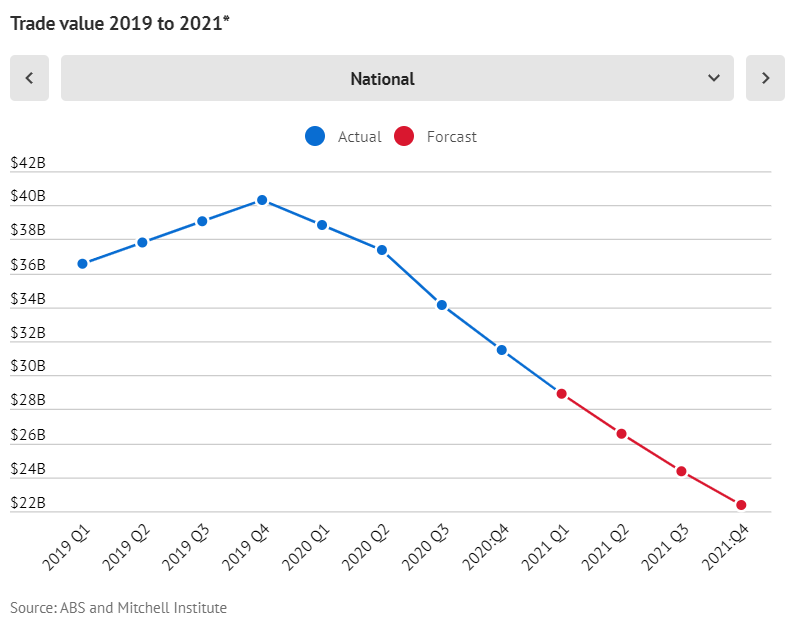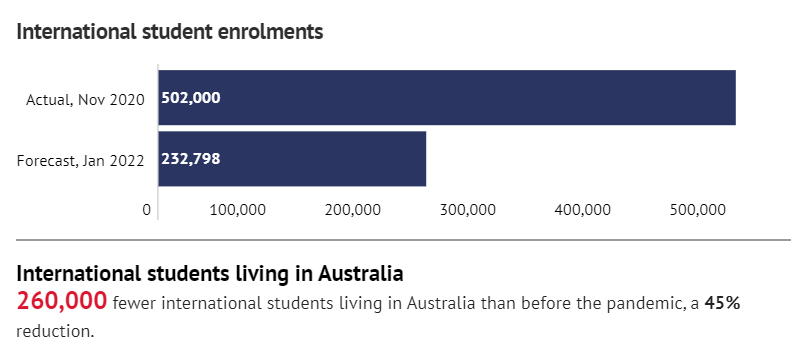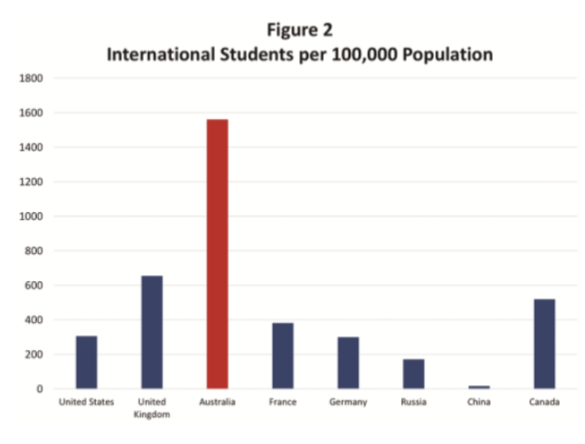The Mitchell Institute for Education and Health Policy at Victoria University has undertaken analysis for Fairfax, which forecasts that the number of international students studying in Australia will more than halve by January 2022 from pre-pandemic levels:
The Mitchell Institute argues that this reduction in student numbers will have a devastating impact on university finances as well as Australia’s trade balance, with education exports projected to fall by $18 billion from their pre-pandemic peak:

Australia’s education ‘exports’ are forecast to fall from a pre-pandemic peak of $40 billion to $22 billion.
As an aside, I have previously debunked this dubious “$40 billion” education exports figure, which is wildly exaggerated.
The Mitchell Institute also argues that the loss of international students will have a devastating impact on Australia’s CBDs, whose businesses have become heavily reliant on the spending and labour from international students.
It is important to note that halving Australia’s international student numbers would merely move Australia more into line with similarly developed nations whose concentrations of international students was less than half of Australia’s in 2017:
Even if Australia’s international student numbers were halved, it would still have the highest concentration of foreign students in the developed world.
The costs of Australia’s international students obsession is also never taken into account, including the degradation of entry and teaching standards, which has badly eroded the quality of education provided to domestic students.
This erosion of quality is evidenced by:
- The dramatic increase in the number of students to academic staff;
- Domestic students being forced into group assignments with non-English speaking foreign students, thus acting like unpaid tutors that cross-subsidise their marks and help them pass; and
- The massive increase in cheating by international students.
On these points, honorary Deakin academic, Louise Johnson provides the most salient insight to Fairfax:
[Johnson points] to a “cancerous” cycle of chasing foreign student fees to fund the research volumes needed for global rankings aimed at securing yet more international students.
COVID aside, she says, too much teaching is now online, impersonal, inferior and left to an increasingly casualised, overworked and exploited sessional staff…
“Some [international] students have been fabulously engaged. But I’ve also had cohorts in my class who had no idea what I was talking about, couldn’t read what I was asking them to read, and who certainly could not write in a way that I regard as university standard.”
The sad reality is that Australia’s universities have become key players in the edu-migration con, where they ‘clip the ticket’ and earn fat fees on international students seeking work rights and permanent residency.
Our universities must be brought to heel and forced to return to their primary purpose of educating Australians, not behaving like migration ‘middle-men’ selling low-quality degrees for maximum profit.
Halving international student numbers, so that they more accurately reflect developed country norms, is a good start on the road to reform.



